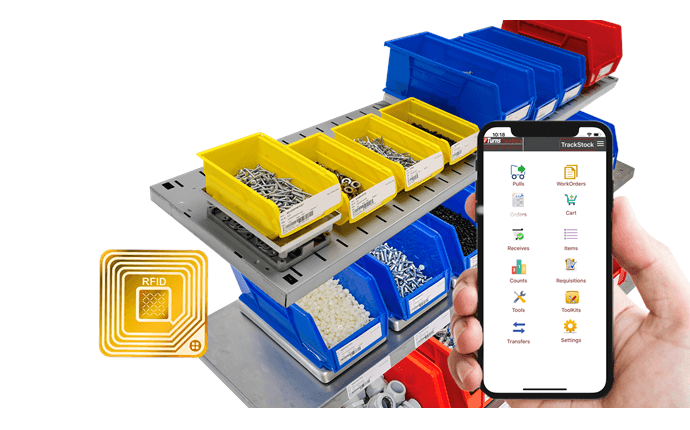What Is The Difference Between VMI and Just In Time?
What Is The Difference Between Vendor Managed Inventory And Just In Time?
Imagine a world without manufacturing. It's hard to do! And in today's economy, many strategies and techniques help companies manage their inventory, resources, and production.
The two most notable inventory management methods are VMI, or 'Vendor Managed Inventory," and JIT, or "Just In Time." Both help manufacturers reduce costs and increase operational efficiency.
What Is Vendor-Managed Inventory?
VMI is a system in which a manufacturer's suppliers manage product inventory levels. Under the VMI system, the manufacturer's suppliers would be responsible for the following:
-
Monitoring Product Inventory Levels
-
Restocking or Replenishing Products As Needed.
-
Tracking Sales
-
Tracking Customer Demand
-
Adjusting Orders Accordingly

Advantages of VMI include:
Accurate Inventory Counts - With a vendor-managed inventory, suppliers can ensure they have the inventory levels they need when needed, reducing the time and money wasted on overstocking or understocking items.
Improved Customer Service - With vendor-managed inventory, suppliers can quickly fulfill customer orders and ensure that the correct items are always in stock. Having the items on hand when you need them increases customer satisfaction and helps boost sales.
Lower Carrying Costs - By having the vendor take on the responsibility of managing inventory, suppliers can reduce the costs and expenses of carrying inventory.
Improved Forecasting Capabilities - With a vendor-managed inventory system, suppliers can accurately predict customer demand and order the right amount of inventory without missing a beat. This capability helps to prevent stock-outs and reduce the risk of overstocking.
As a result, the manufacturer can monitor the inventory levels in real time, allowing them to manage their supply chain better. Additionally, having the suppliers manage the inventory levels helps manufacturers reduce costs associated with warehousing and transportation.

What Is JIT Inventory?
JIT is a production process that focuses on delivering the right product, in the right amount, at the right time. Both methods help manufacturers reduce costs and inventory levels while ensuring that the right products are available when needed.
Among the benefits of JIT inventory management:
Lower Inventory Costs - JIT reduces the need to store parts and materials in inventory. These items get restocked and delivered when needed, leading to reduced costs for storage, handling, and product obsolescence.
Increased Quality - JIT eliminates the need to stock and carry large batches of components which can lead to more significant quality control issues. Because components get ordered only when needed, there is a lower risk of stocking faulty parts.
Added Efficiency - By managing inventory and components ordered, Just In Time increases the efficiency of the production process. For lean companies operating on a lean model, this contributes to cost savings and faster delivery times.
Increased Flexibility - Just in time allows companies to adjust quickly to changing circumstances, such as customer demand or market conditions. If demand slows, vendors don't have to sit on inventory that isn't moving.
Along with the advantages of Just In Time Inventory management, there are some disadvantages. Let's talk about some of them.
Supplier Dependence - When working on a JIT model, companies rely on their suppliers to deliver components on time. If there are delivery delays or a bottleneck in the supply chain, it could lead to production slowdowns or disruptions outside your control.
Setup Costs - Implementing Just In Time could require companies to invest in setup and technology to streamline the process of reordering products or components when needed.
How To Determine If Vendor-Managed Or Just-In-Time Inventory Is Right For Your Organization
Companies must consider many factors when determining which inventory system is best for their operations.
Vendor Managed Inventory (VMI) is suitable for companies who can trust their vendors to manage their inventory and companies who need a large amount of stock to meet customer demand.
Just In Time (JIT) inventory is more suitable for companies with extended lead times. It allows them to order only the necessary stock to meet customer demand, reducing inventory costs. However, companies must consider their business needs, the type of products they produce, and the level of trust in their vendors when deciding between VMI and JIT.
Ultimately, the right inventory system will depend on their individual needs and capabilities.
At BCEPI, we strive to provide clients with solutions tailored to their needs. Our team of experienced professionals consistently delivers quality results. We understand that each client has unique requirements, so we take the time to understand their goals, develop an action plan, and offer solutions.

